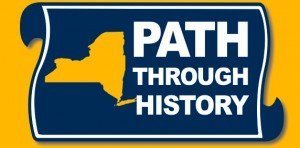 The Associated Press is reporting that the New York State Board of Regents, which oversees museums in the state, may change their policy to allow museums to sell their collections in order to pay back debt. The change is a result of Fort Ticonderoga’s recent financial troubles. Here is a clip from the story:
The Associated Press is reporting that the New York State Board of Regents, which oversees museums in the state, may change their policy to allow museums to sell their collections in order to pay back debt. The change is a result of Fort Ticonderoga’s recent financial troubles. Here is a clip from the story:
The state Board of Regents started working on an “emergency amendment” to the rules governing how museums can manage collections because it appeared that Fort Ticonderoga, a historic site and museum in northern New York, was on the verge of bankruptcy, said James Dawson, chairman of the board’s Cultural Education Committee…- State rules currently require museums to use the money from such sales only to buy other works or enhance their collections.
The emergency amendment would allow museums to sell off works to pay down debt if they can show that they have no other way to raise the money and would otherwise go bankrupt. The museums also would only be allowed to sell the works to another museum or historical society in New York.
The Board was to have taken up the amendment at a meeting Monday but Dawson — who represents northern New York on the Board of Regents — said he withdrew the proposal Thursday, partly because Fort Ticonderoga was able to raise enough money to stay out of bankruptcy court.
The plan has come to light just two weeks after the National Academy in Manhattan (not subject to the Board of Regents) sold off two Hudson River School paintings. Other cultural institutions in the state are also facing financial hardships that have been reported here at the New York History blog, including local libraries and Amsterdam’s Elwood Museum. Last month Fort Ticonderoga laid-off four employees and closed an office building (BTW, the Smithsonian is also facing financial hardship and recently cut salaries).
It was announced in July that Fort Ticonderoga faced financial ruin after Deborah Mars, a Ticonderoga native married to the billionaire co-owner of the Mars candy company Forrest Mars Jr., bailed on their long-time support for the fort just before completion of the new $23 million Deborah Clarke Mars Education Center. The Mars paid for nearly all of the new building’s construction but left before it was finished leaving Fort Ti about two million dollars in debt. When the building bearing their name opened, they didn’t show.
Other options that have been floated include applying for new short-term loans, a new capital campaign to raise $3 million to $5 million, asking the state for a bailout or to take over ownership of the fort, selling of some of the fort’s property or collections or closing for an indefinite period until the finances are sorted out. Coincidentally, Ticonderoga was also considering selling a Hudson River School painting, Thomas Cole’s 1831 “Ruins of Fort Ticonderoga.”
According to the Associated Press:
Anne Ackerson, director of the Museum Association of New York, said her group was among those opposing the idea of allowing museums to sell their collections to pay debts. While it might be a short-term fix for some museums’ financial problems, it might dissuade others from seeking other solutions when money gets tight, she said.
The Board of Regents rules governing the sale of museum holdings were established in the early 1990s when the New York Historical Society faced financial problems.
Assemblyman Richard Brodsky, a Queens Democrat who chaired an investigative committee at the time, said he was happy to hear the Board of Regents had withdrawn the emergency amendment proposal but remained concerned that they might still try to tweak other parts of the rules that define what qualifies as part of a museum’s collection.
Brodsky said he urged the Regents to hold off on making any changes until after a more thorough review involving museums, the Legislature and others with an interest.
 Someone I know sent me an e-mail in response to my posts about the Path through History asking me “What do you think has motivated Cuomo to launch the $60 million tourism initiative?”
Someone I know sent me an e-mail in response to my posts about the Path through History asking me “What do you think has motivated Cuomo to launch the $60 million tourism initiative?”







